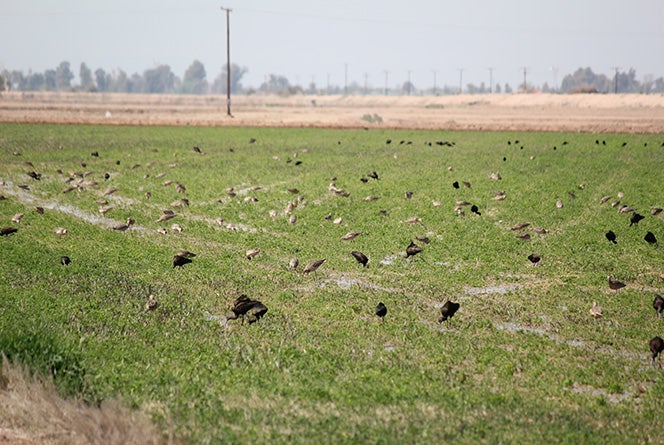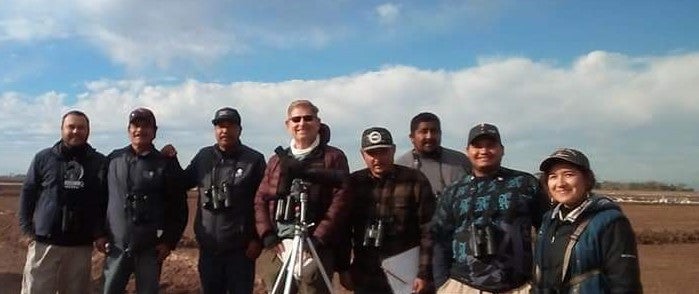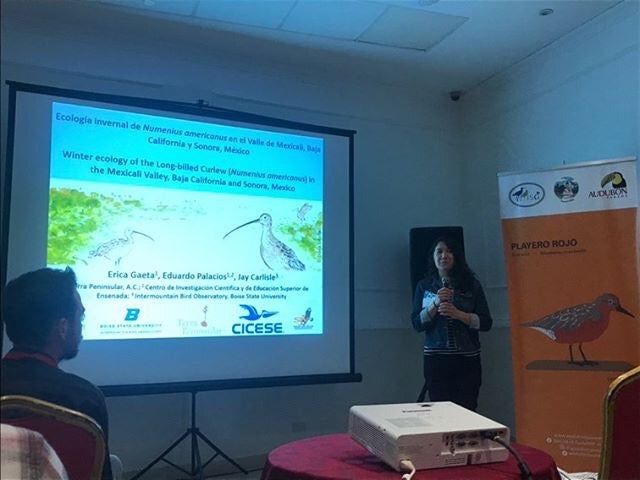By Erica Gaeta
I guess you could call me a Curlew Crew veteran. I worked with Intermountain Bird Observatory studying breeding Long-billed Curlews for two seasons back in 2015 in Island Park, Idaho, followed by Jackson, Wyoming in 2016. I also had the opportunity to work with the U.S. Geological Survey studying breeding curlews in NE Oregon. During my first season with IBO, I was intrigued by Long-billed Curlews because 1.) I love shorebirds, and the Long-billed Curlew is the largest shorebird in North America 2.) I learned that the majority of curlews wintered in California (where I am from) and Mexico (where my ancestors are from).

I admittedly anthropomorphized the curlew as one of my relatives, who had migrated to a new land in search for a safe place to raise their offspring like my parents did for me.
Working with breeding curlews, I often wondered about wintering curlews after the short breeding season ended. I soon learned that limited information was available regarding wintering curlews in Mexico, especially regarding their habitat preference and potential threats they face. I remember jokingly telling Jay while working with IBO that I wanted to help him gain more information regarding wintering curlews in Mexico.
While taking a break from the curlew crew, I took on a fellowship where I had the opportunity to work at a research field station in Sonora, Mexico (where I was able to see wintering curlews). Working here, I met Dr. Eduardo Palacios, one of the leading shorebird biologists in northwest Mexico from Centro de Investigación Científica y de Educación Superior de Ensenada, and a board member of Terra Peninsular. Meeting Eduardo and having previously worked with IBO, we formed a binational collaboration where I led a successful proposal to the Sonoran Joint Venture to build a 2018-19 pilot study on curlews wintering in northwest Mexico. If you are curious to learn about wintering curlews and our results you can read more in this Sonoran Joint Venture blog post.

In October, I had the opportunity to present our winter research at the Western Hemisphere Shorebird Group meeting in Panama City, Panama, which was a new experience for me! As someone who has questioned her place in science, not only because I am a woman but also an underrepresented minority in STEM, it was an amazing experience to present our research to a diverse audience of shorebird biologists from all across the western hemisphere. I also got to meet several partners that support IBO’s efforts to conserve curlews throughout the breeding range. Hopefully in the near future, we can continue to build binational or trinational (Canada, U.S., and Mexico) collaborations to continue to learn about migratory connectivity and how we can effectively conserve Long-billed Curlews throughout their range.

I am very grateful for this experience and could not have done it without the support from my family, collaborators (Jay and Eduardo), Terra Peninsular, Sonoran Joint Venture, the U.S. Forest Service, and especially my crew members Juan Butron, Juan Carlos Medina, Benito Rocha, Jose Juan Butron, and Juan Angel Butron from Pronatura Noroeste.
This article is part of our 2019 end of the year newsletter! View the full newsletter here, or click “older posts” below to read the next article.